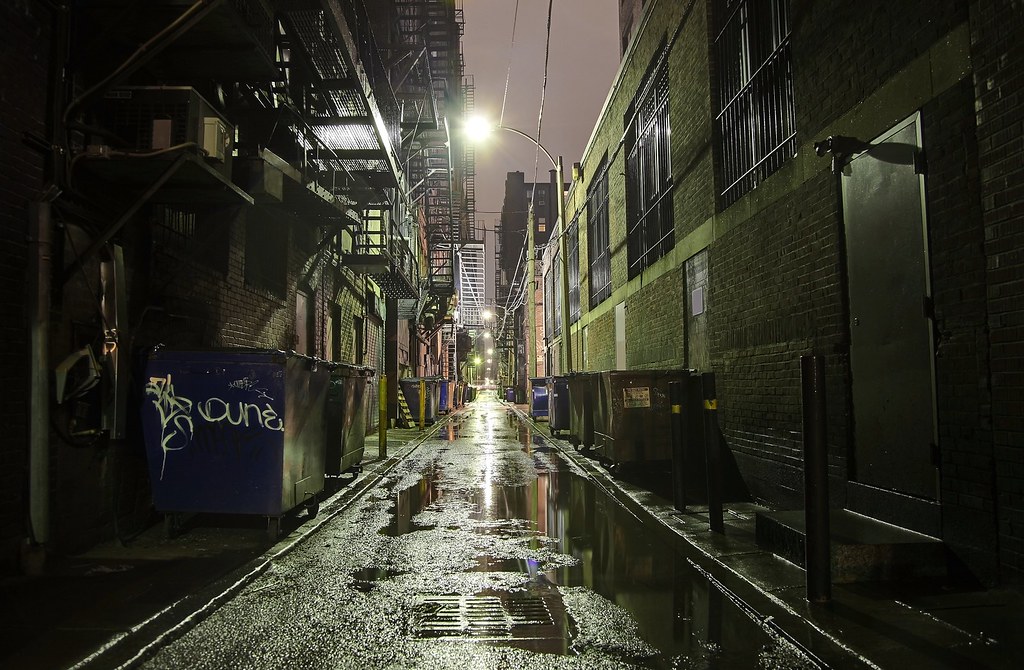This poem describes a very visceral experience I had to reconcile how fragile my own stage of privilege was. The poem captures a hypothetical where a lady notices poverty, between the alleyways, the exact moment her own privilege is realized, causing her to scurry away in guilt. Alleyways, for me, represent a darker side to the urban environments – as places where things happen in the shadows. It occupies a particular space within popular urban colloquialism as being dark and seedy.
Man, pikinini
waite man, black man, olgeta lain.Passerby’s pass on by
in quick strides,
shunned, avert eyes,
seeing what can’t be unseen– Lukim em,
em sanap na lukimShe squints to see.
There,
beyond her screen and armani rays,
cradled barren hope
tormented in her sleepless dreams
inside thatched ruins.the cracks in the path led to
Despair, etched deep into frail wrinkled
hands not meant to toil concrete.the reflection in her armani rays,
was the crumbling mortar hanging from moss ridden bricks was her clothes in tethers, pealing from their damp skins.the hands cannot toil concrete.
Pasim ai, karamapim nus, sakim het.
failure has a putrid stench,
desperation courts hopelessness,
rising from the viscous substance
crawling to makeshift drains
tunnelling beneath her feet.but a glance.
Saitim ai, inap lo’ luk luk.
Her pace harkens for quick strides,
her squint disappears behind armani rays.
Her phone had seen enough.-Hans Lee
This poem describes a very visceral experience I had to reconcile how fragile my own stage of privilege was. The poem captures a hypothetical where a lady notices poverty, between the alleyways, the exact moment her own privilege is realized, causing her to scurry away in guilt. Alleyways, for me, represent a darker side to the urban environments – as places where things happen in the shadows. It occupies a particular space within popular urban colloquialism as being dark and seedy.

But this is also by no means an accurate depiction of urban PNG.
Our urban built environments are not designed in a way to have ‘alleyways’, which is what this poem alludes too. And Port Moresby, as much as any place in PNG would a female wearing Armani Sunglasses be walking around and stopping to take a pic of the alleyways.
Much of our urban environment is tied again to a historical, political, and economic context that has created an urban environment void of these ‘alleyway’ spaces. In the absence of this element, we borrow and transpose this to reconcile our experiences.
The environment captured in the poem is then very foreign and speaks more to the void that exists in my own reference point for how I as well as other PNGeans imagine urban poverty. The classic imagery is a damp alleyway full of trash with foul water flowing down the creaks in the sealed access way where the human elements endure life between the rubbish tips. This is just not reflective of the urban poverty in countries like PNG.
As a point for future exploration, I’d like to engage in discussions around what PNG imagines ‘urban poverty’ to looks like and whether this imaginary has any bearing on how PNG builds narratives around what it is to be ‘urban’?
But more importantly, there is a lack of art and culture, and with particular reference to literature, a deep chasm in fictional and non-fictional depictions of the lived experiences of the urban population. This becomes an issue as PNG paces towards urbanization amidst the popular narrative that paints it as a largely rural nation. Though this is true, we do this at the risk of under-allocating resources to our rapidly growing urban populations and thereby under-planning for our growing cities.


